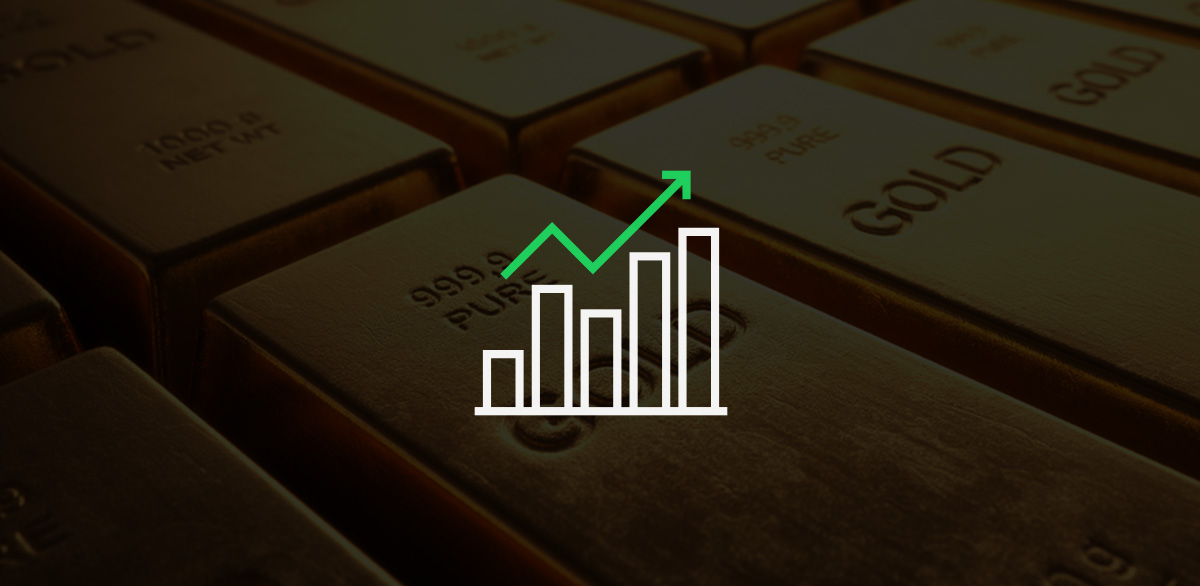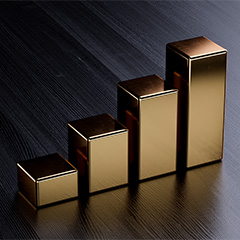
Investors, consumers, and even central banks took advantage of bargain gold prices in the third quarter: year-over-year gold demand jumped 6.2t to 964.3t from July to September, reports the World Gold Council. Stock-market-wary investors sought safety in gold bars and coins, savvy shoppers snapped up deals on gold jewelry, and central bankers stocked their vaults with the yellow metal.[1]
What does all this mean for gold prices? Supply and demand is one of the main factors that influence gold prices. So, expect the price of gold to trend upward. The experts already do: London Bullion Market Association members predict $1,565 by October 2019![2]
Take a closer look at gold supply and demand in the third quarter of 2018.
Gold Demand in Q3 2018
Gold buyers returned to the market in the third quarter amid a seasonal slump in prices and some competition from the U.S. dollar (Learn more in “Is President Trump Telling You to Buy Gold Now?”).

Everything you need to know to get started in Precious Metals
Learn how precious metals can strengthen your portfolio, protect your assets and leverage inflation.
Who bought gold? And what kind?
Investors Buy Gold Coins and Bars
Investors around the world took advantage of the dip in prices for gold coins and bars: demand leaped 28 percent year-over-year and 20 percent quarter-over-quarter, indicates the World Gold Council.
Why? Bargain prices caught investors’ attention at home and abroad. Stock market volatility and currency weakness was a catalyst for demand in many emerging markets.
Which countries bought the most gold?[3]
Global Gold Coin and Bar Buying by Country or Region
| Country or Region | Demand Increase (Year-Over-Year) |
| China | 25 percent |
| India | 11 percent |
| Middle East | 144 percent |
| Europe | 10 percent |
| U.S. | 74 percent |
Spotlight: U.S. Gold Coin Buying
American investors swooped into the coin market when the spot price of gold dipped below $1,300 an ounce in June.[4] The U.S. Mint and individual coin dealers reported record sales in the third quarter.
U.S. Mint Gold Coin Sales
Sales of American Eagle gold coins were significantly higher in the third quarter of 2018 compared to the same period of time in 2017.
American Eagle Gold Coin Sales
| Month | 2017 | 2018 |
|---|---|---|
| July | 17,500 coins | 35,000 coins |
| August | 9,500 coins | 21,500 coins |
| September | 11,500 coins | 20,500 coins |
July and August 2018 sales of American Gold Eagles were twice as high as the year prior.[5]
Compared to July 2017, sales of all types of precious metals bullion coins were up 100 percent last July.[6] August brought even better sales: up 126 percent from the same month in 2017. By September, the U.S. Mint announced it had sold out of American Silver Eagles![7][8]
Gold Coin Dealers
Many investors took their business to a gold and silver dealer, who also reported increased sales in the third quarter. At Scottsdale Bullion & Coin, sales of gold and silver coins shot to an 18-month high in July.
Learn more about the customers driving gold coin sales in Q3 in “Smart Money Buying Up Physical Precious Metals, Sales Skyrocket 126%.”
Consumers Purchase Gold Jewelry
Lower price tags enticed budget-conscious customers to jewelry stores. Demand for gold jewelry saw a 6 percent bump year-over-year in the third quarter of 2018.
Economic confidence and bargain prices spurred gold jewelry buying in the U.S. Attractive prices also lured customers in Indian and South-East Asian markets. Economic improvements, including the stabilization of the pound, encouraged gold buying in Egypt. In China, the Qixi Festival—the country’s version of Valentine’s Day—drove demand.[9]
Global Gold Jewelry Buying by Country
| Country or Region | Demand Increase (Year-Over-Year) |
| India | 10 percent |
| China | 10 percent |
| Egypt | 17 percent |
| U.S. | 4 percent |
| Thailand | 12 percent |
| Indonesia and Malaysia | 11 percent |
| Vietnam | 10 percent |
Table sources[10]
Central Banks Stock Up on Gold
Investors and consumers weren’t the only ones splurging on gold. Central banks spent about $5.82 billion to boost their gold reserves, a level not seen since the fourth quarter of 2015. Year-over-year spending was up 22 percent.
What was behind the gold buying frenzy? ‘A 100 percent guarantee from legal and political risks’—at least that was the First Deputy Governor of the Russian central bank Dmitry Tulin’s reasoning for the country’s record-breaking gold purchasing. The bank bought more than 92 tons of gold, its greatest quarterly net purchase ever, according records started in 1993.
Global Central Bank Gold Buying
| Central Bank | Purchase Increase (Year-Over-Year) |
| Russia | 92.2t |
| Turkey | 18.5t |
| Kazakhstan | 13.4t |
| India | 13.7t |
| Poland | 13.7t |
| Hungry | 28.4t |
Table sources[11]
Technological Sector Utilizes Gold
In the technological sector, demand for gold rose for the eight quarter in a row. Electronics, particularly server and smartphone applications (2-5 percent), accounted for the greatest increase: 2 percent year-over-year. The use of gold in printed circuit boards increased 5-7 percent year-over-year. Gold also played a vital role in R&D activities.[12]
Gold Supply in Q3 2018
When determining gold prices, supply plays as big of a role as demand. Overall, total gold supply was a bit lower in the third quarter compared to the same period of time in 2017.
Although quarterly mine production increased 1.9 percent year-over-year, continued de-hedging and reduced gold selling, and therefore recycling, resulted in an overall decline in supply.
- Mines in Russia and Canada were among the key producers contributing to the increase in output.
- Mature short-term hedging positions and lower gold prices across many producer currencies provided less incentive to make new hedging agreements.
- Gold selling and recycling decreased in Europe, the U.S., and India but increased in Iran and Turkey.[13]
Q4 Opens with Healthy Gold Demand

If October is any indicator of what gold sales for the rest of the quarter will look like, expect this gold rally to continue. Gold dealers across the country reported increased buying activity.
What drove new and returning customers into physical precious metals? Stock market volatility was one reason. Others cited concern over the rising budget deficit. Increasing inflation was on many investors’ minds. Experts at the International Monetary Fund and big banks are also worried about such issues. Learn more in “Why the Next Financial Crisis Could Be Worse than 2008.”
Barry Stuppler, President of the Professional Numismatists Guild (PNG), said the spike in dealer business could be attributed to the rising price of gold:
‘In addition to the U.S. American Eagle and Canadian Maple Leaf bullion coins, some common date century-old U.S. gold coins are selling now for just a small fraction above their precious metal content.’ The same is true for some late 19th and early 20th century U.S. silver coins. There’s an opportunity now to acquire these kinds of coins at a low premium over their melt value.’
With gold demand rising, the window to take advantage of the deals on gold is closing. By this time next year, the yellow metal could fetch $1,565 an ounce!


